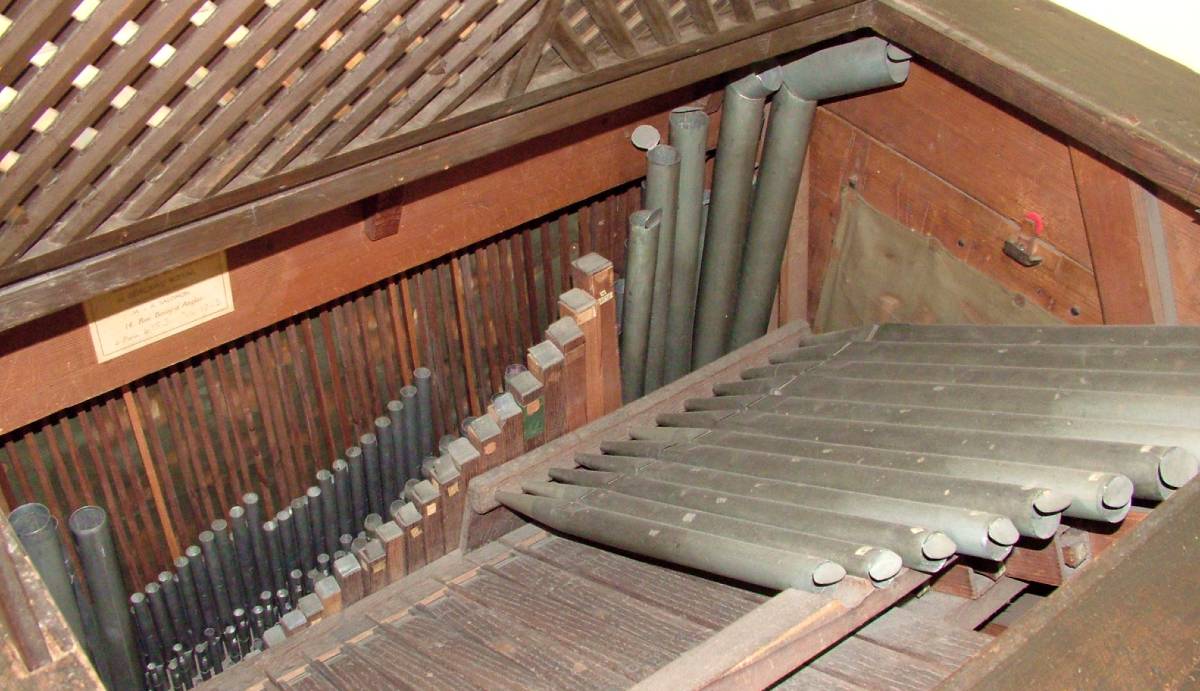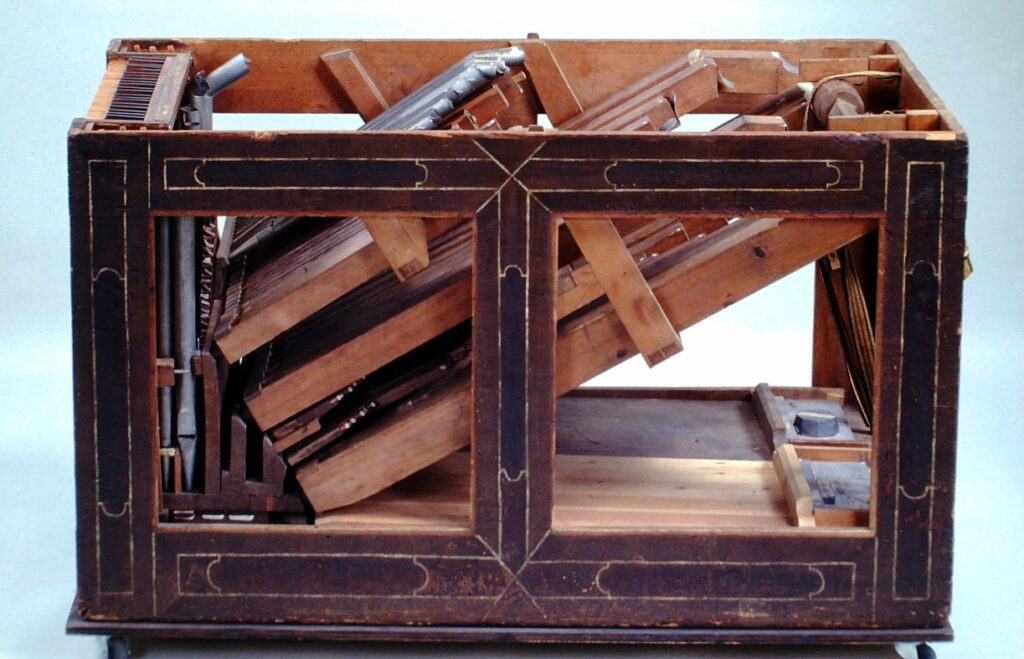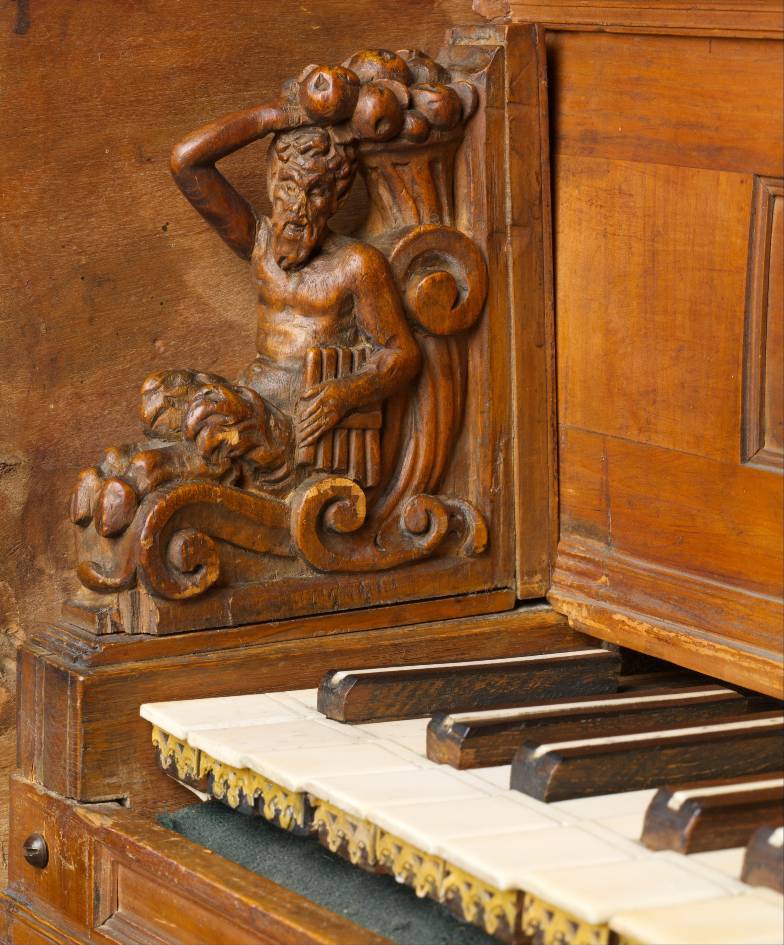
Later this month Charles Metz is slated to give a Zoom talk on historical keyboards for the Newberry Consort, and the next #NCGreatPerformances video is designed as a companion piece.
It features recordings of three works from three periods played on three period-style instruments. I was asked to give each piece its own title card with full information about the instrument along with a photograph. Beyond that, I had carte blanche.
Given the purpose of the video and the emphasis already given to the mechanics of the sound production–and the fact that every piece would be preceded by a photograph of an instrument–it makes little sense to go hunting for period artwork that would only wreck any sense of visual continuity. But it’s the perfect opportunity to use images of corresponding period instruments, and more perfect still if those images included tight details on the inner workings. If I could find them.
The Met to the rescue
The Metropolitan Museum of Art was the obvious place to start, with their vast instrument collection and generous open access program, and they did not disappoint. Behold their perfect exemplars (and photographs!) of a portative/positive* organ, a 17th-century Italian harpsichord, and an 18th-century fortepiano.



The photos of the harpsichord emphasize the visual aspects of the instrument, which has lovely landscapes painted on the inside of the lid and carved figures on either end of the keyboard. The organ and fortepiano have no such visual interest, thank goodness. That leaves only the mechanisms as the photographer’s focal point. They removed the sides of the organ to reveal the various sets of pipes crammed into that small case. For the fortepiano, the action has been pulled all the way out to reveal just how complex the mechanism must be to permit dynamic variation. (If you’ve ever seen a technician service a grand piano, you’ll recognize the way the action pulls out like a drawer.)
The video goes live on Friday, February 19, 2021, at 9:00 am CST. I’ll add a link once it’s available. [Edit: Here’s the link.]
Charlie’s hour-long talk is Saturday, February 27, 2021, at 2:00 pm CST. If you’ve found your way here prior to that date, here’s a link to the event, which is free but requires registration: https://newberryconsort.org/calendar/ebony-and-ivory/
* About portative vs. positive
The Met calls its organ positive. Tayor and Boody calls the organ they made for St. Clements portative. Portative means portable, and both of these instruments were made to roll around their venues. The term is more often used to describe laptop organs, the kind you see in 14th-century illuminations or panel paintings. (Google “portative organ,” and that’s all you’ll see.) Positive implies that the instrument can be placed somewhere, or has perhaps been imposed somewhere. It’s often used to refer to organs that are not free-standing but that are still small enough to be considered a chamber instrument.
The upshot is that the terminology is all over the place. And this is where musicology meets copy editing. In the video, I opted to regularize the descriptions favoring local interpretation. It would be confusingly inconsistent to mix the two, and with all due respect to the curators at the Met, I’ll go with the collective wisdom of our organ builders, performers, and musicologist.


One Response
[…] the latest #NCGreatPerformances video. See my last post for some […]